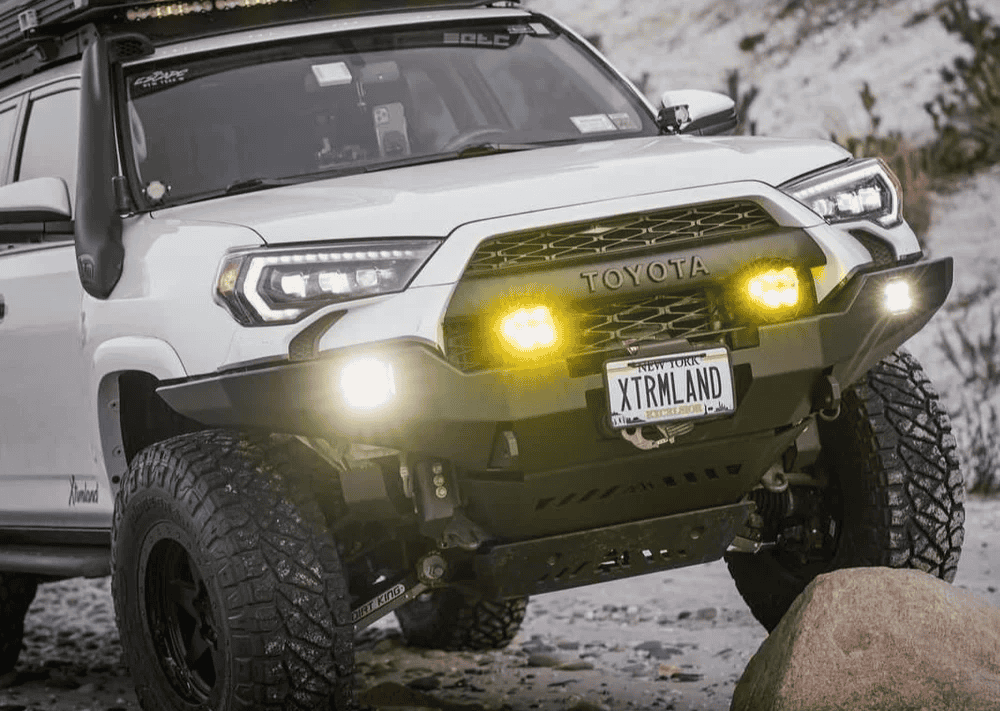Overland Vehicles

The appeal of an overland camper Tacoma starts with a truck that can carry the load while staying predictable on rough tracks and at highway speed. Payload is the foundation. Check the door sticker for payload and remember that every pound counts, including passengers, fuel, tools, water, and the camper itself. Long bed models offer more storage volume and better weight spread, while short beds can feel more agile on tight switchbacks. Either way, keep the center of gravity low and forward of the axle when you can.
Tires influence clearance, gearing feel, and stability. Many owners settle on a true to size 33 inch tire such as 285 70 R17 with correct offset and trimming where needed. Larger tires add rotational mass and can sap power; gear ratio changes or a thoughtful tire choice help restore drivability. Braking and cooling also deserve attention when the truck carries more mass on mountain passes.
Suspension should match the final weight, not the dream list. A progressive leaf pack or helper system tuned for constant load will ride better than an over stiff setup. Quality shocks with proper valving control the camper’s motion and reduce porpoising on washboard.
Bed length shapes layout options. A long bed supports drawers and a fridge behind the axle, while a short bed may benefit from compact slide systems and soft goods. When in doubt, tape out your floor plan and measure reach for daily items.
Know the gross vehicle weight rating and axle limits. Weigh the truck on a public scale with a full trip load to confirm numbers and balance before long travel.
Tire diameter affects crawl, shift points, and hill climbs. Consider ratio changes if you tour at altitude or tow occasionally.
There are four common paths for a Tacoma overland camper. A canopy style camper replaces the bed cap with standing room and integrated side doors. A wedge topper opens at the rear for quick sleeping space and light structure. A traditional rooftop tent on a rack keeps weight higher but can remain the lightest option. Compact slide in campers add hard walls and insulation yet must be chosen carefully to stay within payload.
A toyota tacoma overland camper benefits from modular storage. Keep recovery tools near the tailgate for fast access. Fridges draw less power when ventilated and secured low. Soft cases for clothing pack tighter and move around the cabin as needed. Reserve roof real estate for lighter items like traction boards or sleeping systems. Heavy items on the roof raise the center of gravity and can affect side winds.
Ergonomics decide how relaxing camp feels. A two minute camp routine is ideal. That means the ladder, bed, lights, and stove come online without hunting for parts. In cold conditions, consider an insulated sleep system and window covers to curb condensation. In wet seasons, a rear awning creates a dry galley and a place to stage muddy boots.
Canopy systems create usable standing room and weather protection. Wedge toppers open faster and weigh less. Rooftop tents are simple but raise mass. Compact slide ins provide shelter but demand precise weight planning.
Build around daily habits. If coffee and a quick breakfast start the day, keep the stove, kettle, and fuel within one reach of the tailgate.
Skid plates, sliders, and a front recovery point add confidence. Pack a quality jack, boards, and rated soft shackles for self recovery on remote tracks.
A reliable overland camper Tacoma needs a stable power plan. A compact lithium battery with a DC to DC charger from the alternator provides steady charge while driving. Add solar for idle days at camp. Keep wiring tidy, fused, and protected from abrasion. Separate the fridge and lights from high draw tools to prevent nuisance shutoffs.
Water shapes trip length. Use simple containers with secure caps to keep weight flexible. A small pump and sprayer can rinse dishes and gear without bulky plumbing. Gray water should be contained where required and disposed of responsibly. For cooking, a compact dual burner or a single stove paired with a wind screen handles most meals.
Navigation and communication complete the package. Offline maps, weather checks, and satellite messaging reduce the unknowns. A tire repair kit and air source make fixes possible far from help. Regular maintenance matters too. Monitor wheel bearings, brakes, and driveline after dusty trips to keep the rig ready for the next outing.
When it is time to turn a plan into a clean, reliable setup, working with a specialist can save months of trial and error. If you want a team that builds tested, quiet cabins and balanced suspensions, explore Overland rigs by OZK for inspiration. For tailored layouts, power integration, and tuned ride quality, see Custom overland upfit to understand how a build path becomes a finished truck. Curious about process, timeline, and what the handoff looks like in Northwest Arkansas, visit Why choose OZK Customs.
Bring Your Setup To Life Tell us how you travel, how many nights you camp, and the terrain you love. We will translate that into a quiet cabin, matched suspension, dependable power, and simple camp routines that work trip after trip.
Ready to turn your Tacoma into a dialed travel rig? Tell us how you camp, and our team will blueprint the suspension, power, storage, and camper system to match. Submit the form and get a clear plan, an honest timeline, and a build path that feels effortless.
ADDRESS:
6159 E Huntsville Rd, Fayetteville, AR 72701
PHONE:
(479) 326-9200
EMAIL:
info@ozkvans.com